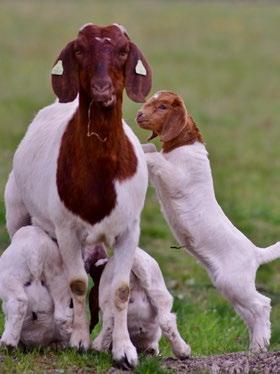
6 minute read
Irrigation made easy Part 1: Principles of irrigation
from ProAgri BNZ 08
by ProAgri
Irrigation made easy: Part 1 Principles of irrigation by Kevin Scott
It is important to understand the fundamental principles of irrigation to become a good farmer. In this series, we shall discuss all the steps and general practices to ensure that your crops will be satisfied and healthy, and reach their full potential.
Advertisement
Aplant is similar to an animal and human and also needs the following to survive:
1. Principles of Irrigation
1.1 Why Irrigate?
A plant is similar to an animal in many respects, to live they both need:
Food Food
Water Water
Air Air
A Home A home
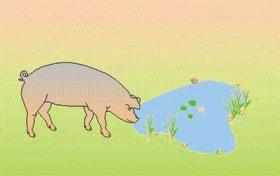
An animal can always travel to find water.
Plants rely on water that comes to them.
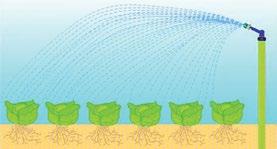
Without water both plants and animals will die. Soil is an important component in the irrigation process. During irrigation, many interesting and vital processes are happening in the soil underneath the crops.
SAFARI DEN national hunting & outdoor promotion 21 April - 18 May | 19 May - 22 June | 23 June - 20 July


SAFARI DEN national hunting & outdoor promotion 21 April – 12 July 2020 SAFARI DEN national hunting & outdoor promotion 21 April – 18 may 2020 available at agra branches nationwide
see page 4 for more details


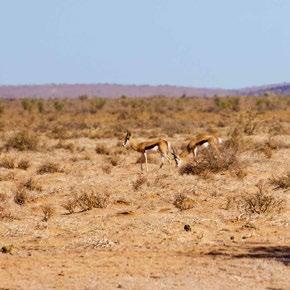
Camping Outdoor Hunting weapons clothing equipment | | | | | Camping Outdoor Hunting weapons clothing equipment | | | | | Camping Outdoor Hunting weapons clothing equipment | | | | |
COMPETITION SPOT COUNT WIN
1
follow our facebook page @SafariDen.Agra FOLLOW
2
Count how many times you see the boot. Write your answer in the comment section COMMENT
3
Share the post on your Facebook page SHARE Stand a chance to win a Safari Den voucher to the value of N$1,000
1 2 3
Soil can consist of rough sand particles…
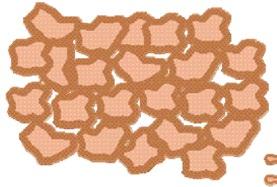
…or of finer clay.

Most soils have a mix of sand and clay particles.
Soil provides a home for the plant.
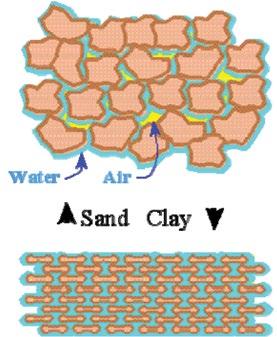
15 mm water applied to the surface of dry sandy soil will penetrate to a depth of about 300 mm, saturating that soil volume.

Plough pan

Roots are firmly anchored in the soil and support the plant, holding the plant upright and in place.
If drainage within the soil profile is blocked by a layer of less pervious soil or a ‘plough pan’, water will fill the soil profile, forcing out air.
The plant will drown! Too much irrigation will always waste water, and can harm the plant.
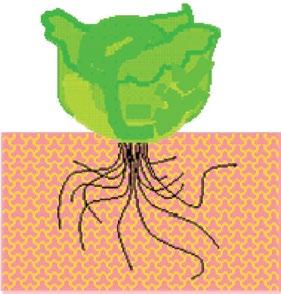
Soil holds water and air
A layer of moisture is held around each soil particle, where water is freely available for the plant to use. Like animals, plants need to breathe. Too much water held in the root zone will lead to some roots suffocating and dying. Clay soils tend to hold and store more water, and less air (per unit soil depth) than sandy soils. Soils that have more sand particles and less clay will store less water in a fixed soil depth than a clay soil. The soil texture will largely determine how much water the soil can hold in the root zone of the plant.
15 mm water applied to the surface of a dry clay soil will penetrate only to a depth of about 100 mm, saturating that soil volume.

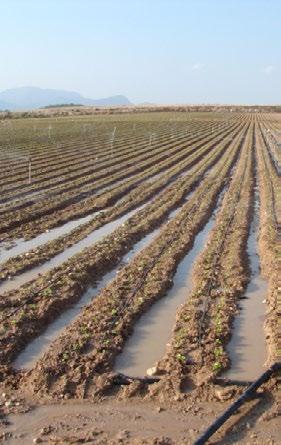
Plant roots only reach down to a certain depth in the soil. Water that has penetrated below this depth is not normally available to the plant.
Water flows past the roots
Too much irrigation will wet the soil so that water penetrates to a depth where the plant roots can no longer reach this water. Water held in the soil below the normal plant root zone will be lost to the plant. Excessive irrigation can harm your plants. Photo: Joris de Vente 2007, available at www.desire-his.eu.
Next month we shall look at what happens with water. Published with acknowledgement to the ARC Agricultural Engineering for the use of their manuals. Visit www.arc.agric.za for more information.
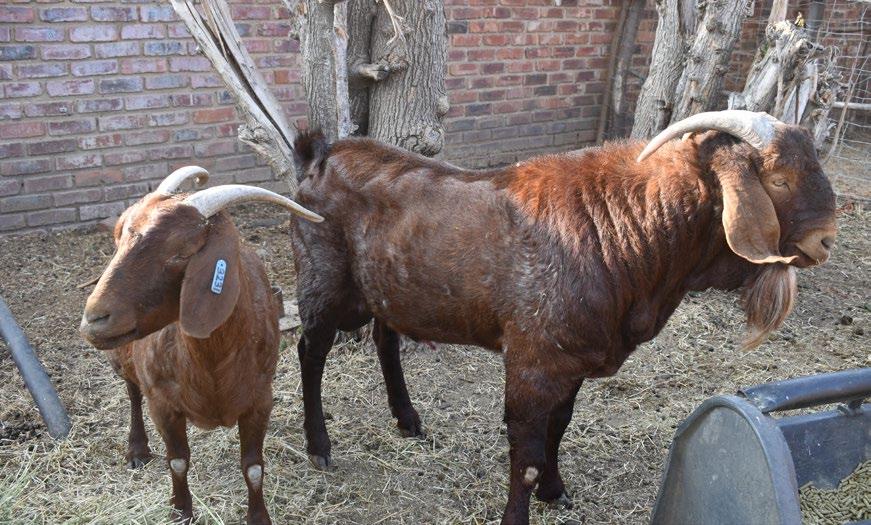
The Kalahari Red is one of the larger goat breeds making them a good choice for goat meat farmers.
Farming Basics: Goat farming
by Jaco Cilliers
Goat farming can be a lucrative business if managed properly. This guide will help you to increase your goat herd with healthy animals, and also your profits. The top meat producing goat breeds are the Boer Goat, Savanna and Kalahari Red. These animals have a bigger body frame and are favoured by goat farmers who prefer them for their meat production. The indigenous veld goat (IVG) does not produce as much meat as the bigger goat breeds but is still in demand for cultural and religious practices. There are some critical aspects to consider when setting up a goat farm. Housing, feeding, breeding, disease control and vaccination requirements all need to be carefully researched before starting your own goat herd. Each of these aspects will be discussed here, but it is important to know that you should consult the experts to get a specific guide for feeding and vaccinating the animals.
Housing
It is recommended that there should be about 0,5 m 2 per goat in the holding pens where they sleep at night. Keeping them indoors at night will help
to prevent theft and diseases caused by exposure during the cold winter months. Make sure that the area where the goats are kept, is not wet and muddy. This will help to prevent illness in the herd. It is important to determine the number of goats that you can keep on your available land. The carrying capacity of pasture depends on the geology, rainfall and plant species that grow on your farm.
Feeding
Decide whether you want to feed the goats or let them roam free to forage for food. Each has its own advantages and disadvantages. Feeding the animals can result in faster growth and better meat production, but it costs much more than free-range foraging. The disadvantage of free-range goats is that they grow slower because they use energy to browse finding food; however, the positive side is that it costs less to feed them. Goats can easily over-graze an area; so, if you decide on free-range, make sure that the herd can be rotated in different camps, allowing the pasture to recover. Many farmers opt for a combination of free range and then feeding the goats only the necessary protein additives.
Breeding
If properly managed, goat ewes can produce a kid every year because they have a five-month gestation period. Goats can be artificially inseminated,
